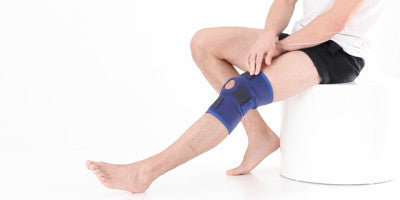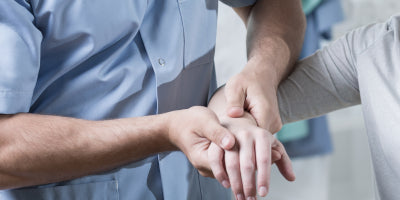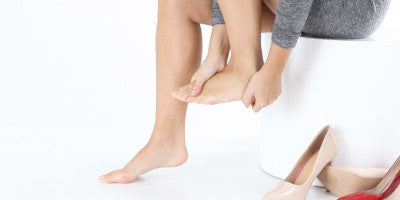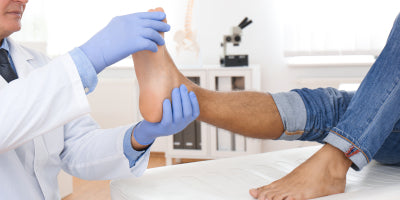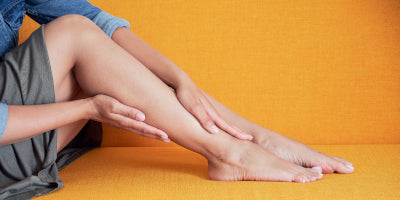The Ultimate Guide to Lower Back Pain
Lower back pain is a common ailment that affects millions worldwide, regardless of age, gender, or lifestyle. It can range from a dull, persistent ache to a sudden, sharp jolt that makes even the simplest movements excruciating. While often temporary, chronic lower back pain can significantly impact your quality of life, limiting your mobility, disrupting sleep, and even affecting your mental well-being.
At Neo G, we understand the debilitating nature of lower back pain, which is why we have written this blog to help you manage, treat, and prevent it. This ultimate guide will cover the intricacies of lower back pain, exploring its causes, symptoms, and various management strategies, including the role of back supports in your recovery journey.
What is Lower Back Pain?
Your lower back, also known as the lumbar region, is composed of five vertebrae (L1-L5), cushioned by intervertebral discs, and supported by a complex network of muscles, ligaments, and nerves. This intricate structure allows for a wide range of movements, from twisting and bending to lifting and carrying, while also bearing the weight of your upper body.
Lower back pain typically refers to discomfort or soreness in the lumbar region. It can originate from various structures within the back, including:
• Muscles: Strains, spasms, or tears in the muscles supporting the spine.
• Ligaments: Sprains or tears in the strong fibrous tissues that connect bones.
• Discs: Herniated or bulging discs, where the soft inner material pushes out, potentially compressing nerves.
• Vertebrae: Fractures, misalignments, or degenerative changes like osteoarthritis.
• Nerves: Compressed or irritated nerves, often leading to sciatica (pain radiating down the leg).
Understanding the specific source of your pain is crucial for effective treatment, highlighting the importance of professional medical diagnosis.

What are the Symptoms of Lower Back Pain?
The symptoms of lower back pain can vary widely in intensity and character. They may include:
• Dull, aching pain: A persistent, throbbing sensation in the lower back.
• Sharp, stabbing pain: Sudden, intense pain that may occur with certain movements.
• Stiffness: Difficulty bending or straightening the back, especially after periods of inactivity.
• Muscle spasms: Involuntary tightening of the back muscles, causing acute pain.
• Pain radiating down the leg (sciatica): A common symptom when a nerve is compressed, leading to numbness, tingling, or weakness in the leg or foot.
• Limited range of motion: Difficulty performing everyday activities due to pain or stiffness.
• Aggravation with activity: Pain that worsens with movement, lifting, standing, or sitting for long periods.
• Improvement with rest: Pain that lessens when lying down or resting.
If you experience any of these symptoms, especially if they are severe, persistent, or accompanied by numbness, weakness, or loss of bowel/bladder control, seek immediate medical attention.

What are the Causes of Lower Back Pain?
The causes of lower back pain are diverse and can often be a combination of factors. They can be broadly categorised into:
1. Mechanical Issues: These are the most common causes and relate to how your back moves and functions.
• Muscle or Ligament Strain: Often caused by sudden, awkward movements, heavy lifting, or repetitive strain.
• Bulging or Herniated Discs: As we age, the discs can degenerate. Excessive pressure or trauma can cause the soft inner material to bulge or rupture, pressing on nearby nerves.
• Sciatica: Not a condition itself, but a symptom of an underlying problem (like a herniated disc or spinal stenosis) that irritates the sciatic nerve.
• Degenerative Disc Disease: Age-related wear and tear on the spinal discs, leading to pain and stiffness.
• Osteoarthritis: The breakdown of cartilage in the facet joints of the spine.
• Spinal Stenosis: Narrowing of the spinal canal, which can put pressure on the spinal cord and nerves.
• Spondylolisthesis: A condition where one vertebra slips forward over another.
2. Lifestyle Factors:
• Poor Posture: Prolonged slouching or incorrect standing can put undue stress on the lower back.
• Sedentary Lifestyle: Lack of physical activity weakens core muscles, leaving the back vulnerable to injury.
• Obesity: Excess weight puts additional strain on the spine.
• Improper Lifting Techniques: Lifting with your back instead of your legs can lead to strains and disc injuries.
• Smoking: Reduces blood flow to the spine, accelerating disc degeneration.
• Stress and Anxiety: Can contribute to muscle tension and exacerbate pain.
3. Other Conditions:
• Fibromyalgia: A chronic condition characterised by widespread pain, including lower back pain.
• Ankylosing Spondylitis: An inflammatory arthritis primarily affecting the spine.
• Kidney Stones or Infections: Can sometimes cause referred pain in the lower back.
• Tumours: Although rare, tumours in the spine can cause back pain.

How Can I Manage and Treat my Lower Back Pain?
Managing lower back pain often involves a multi-faceted approach, tailored to the individual's specific condition and severity of pain. Here are some common strategies:
• Rest (Short-Term): While prolonged bed rest is generally not recommended, a day or two of reduced activity can help acute pain subside.
• Pain Relief Medication: Over-the-counter options can reduce pain and inflammation. For more severe pain, a doctor may prescribe stronger medications or muscle relaxants.
• Hot and Cold Therapy: Applying hot & cold packs, like our Neo G Hot & Cold Therapy Packs, can reduce inflammation in acute injuries, while heat pads, also like our versatile Neo G Hot & Cold Therapy Pack, can relax tense muscles and improve blood flow in chronic pain. These packs are designed to be conveniently used for both hot and cold applications, making them a versatile addition to your pain management toolkit.
• Physical Therapy: Physical therapy involves exercises to strengthen core muscles, improve flexibility, and correct posture. A therapist can also use techniques like massage, ultrasound, and electrical stimulation.
• Exercise: Once acute pain subsides, regular, low-impact exercise like walking, swimming, or cycling can strengthen muscles and improve overall fitness. Read our blog ‘5 Low-Impact Ways to Stay Active in Summer’ for more guidance on low-impact exercises. Always consult with a healthcare professional before starting any new exercise regimen.
• Mind-Body Techniques: Practices like yoga, tai chi, meditation, and mindfulness can help manage pain by reducing stress and improving body awareness.
• Acupuncture: Some individuals find relief through acupuncture, an ancient Chinese therapy involving the insertion of thin needles into specific points on the body.
• Injections: For persistent pain, a doctor may recommend corticosteroid injections to reduce inflammation around nerves or in joints.
• Surgery: Surgery is typically a last resort, considered only when conservative treatments have failed and there's a clear structural cause for the pain, such as a severely herniated disc or spinal stenosis.

Will a Back Support Help My Lower Back Pain?
Back supports, also known as back braces, can be a valuable tool in the management of lower back pain, especially for certain conditions and during specific phases of recovery. They work by providing compression, support, and stability to the lumbar region.
Here's how a back support can help:
• Pain Relief: By compressing the abdominal area, back supports can offload some of the pressure on the spine, reducing pain.
• Stability and Support: They help to stabilise the lumbar spine, which can be beneficial after an injury or during periods of increased physical activity.
• Improved Posture: By providing external support, back braces can encourage proper alignment of the spine, helping to correct poor posture that contributes to pain.
• Reduced Muscle Strain: They can limit excessive movement, preventing further strain on muscles and ligaments.
• Proprioception: Some braces enhance proprioception (your body's sense of position), making you more aware of your posture and movements.
However, it's crucial to use back supports judiciously. Prolonged or improper use can weaken core muscles, making the back more reliant on the brace. They should be used as a temporary aid during recovery or during activities that might exacerbate pain, not as a permanent solution. Always consult with a healthcare professional to determine if a back support is appropriate for your specific condition.
Which Back Support Will Help my Lower Back Pain?
Neo G offers a range of innovative back braces and supports designed to provide targeted relief and support for various lower back conditions. Choosing the right brace depends on your specific needs and the nature of your pain.
• Neo G Easy Fit Back Brace: This brace is an excellent option for everyday support and features a moderate to firm support level. Its easy fit design ensures comfortable wear under clothing, making it discreet and practical for daily activities. It provides good compression and support, helping to relieve pain and encourage proper posture without being overly restrictive. It's ideal for those with general backaches or minor strains.
The heat therapeutic neoprene warms muscles while compression straps offer controlled support. This Easy-Fit Back Brace also features an adjustable anatomical lumbar insert and integrated firm stays, which provide additional support.
• Neo G Back Brace with Power Straps: The Neo G Back Brace with Power Straps also offers a moderate to firm support level. The additional power straps provide adjustable, targeted compression, allowing you to customise the level of support to your specific needs. This brace is well-suited for individuals who need support and stabilisation for an injured, weak, or arthritic back. The reinforced design helps to limit unwanted movement, offering greater protection and pain relief.
• Neo G Clavicle Brace for Posture: While primarily designed for the upper back and shoulders, it's worth noting the Neo G Clavicle Brace for Posture, as good posture across the entire spine is vital for overall back health. Poor upper back posture can often contribute to lower back pain by altering the natural spinal curve and increasing stress on the lumbar region. By gently pulling the shoulders back and promoting correct alignment of the clavicle, this brace helps to improve overall posture, which can indirectly alleviate strain on the lower back and prevent future issues. It's a great complementary tool for anyone looking to improve their holistic spinal alignment.
Remember, the best back support for you will depend on your individual needs and the advice of a healthcare professional.

Will my Back Pain Go Away?
The good news is that for many people, lower back pain is temporary and resolves within a few weeks with appropriate self-care and conservative treatments. Acute back pain, often due to muscle strains or minor injuries, typically has a good prognosis.
However, for some, lower back pain can become chronic, lasting for three months or longer. Even in these cases, effective management strategies can significantly reduce pain and improve quality of life. The key is to:
• Seek early diagnosis and treatment: Addressing the issue promptly can prevent it from becoming chronic.
• Adhere to treatment plans: Consistency with exercises, therapy, and lifestyle changes is crucial.
• Manage underlying conditions: If your pain is related to a chronic condition like arthritis, ongoing management is necessary.
• Embrace a proactive approach: Focus on prevention and healthy habits to minimise recurrences.
How Can I Prevent Lower Back Pain?
Prevention is always better than cure. By adopting healthy habits and being mindful of your body, you can significantly reduce your risk of developing lower back pain:
• Maintain a Healthy Weight: Excess weight puts added strain on your spine.
• Exercise Regularly: Strengthen your core muscles (abdominal and back muscles) to provide better support for your spine. Incorporate exercises that improve flexibility and strength.
• Practice Good Posture: Be mindful of your posture when standing, sitting, and walking. Use ergonomic chairs and desks if you spend long hours sitting. Remember to occasionally incorporate stretches and movement to avoid stiffness.
• Lift Safely: Bend at your knees, not your waist, and keep the object close to your body when lifting.
• Avoid Prolonged Sitting or Standing: Take regular breaks to move around and stretch.
• Wear Supportive Footwear: High heels and unsupportive shoes can affect your spinal alignment. You may find a pair of orthotic insoles, such as those from our NeoThotics range, may help improve your back pain.
• Quit Smoking: Smoking reduces blood flow to the spine, hindering its ability to heal and making it more susceptible to injury.
• Manage Stress: Stress can lead to muscle tension. Practice relaxation techniques like yoga, meditation, or deep breathing.
• Sleep on a Supportive Mattress: A medium-firm mattress that supports the natural curves of your spine is ideal.

Conclusion
Lower back pain can be a challenging experience, but with the right knowledge, proactive measures, and effective support, you can significantly improve your outlook.
As the No.1 supports and braces company in the UK and US, at Neo G, we are committed to providing you with the tools and information you need on your journey to a healthier, pain-free back. Browse our range of back supports and braces now and take a proactive step towards lasting relief. Always remember to consult with a healthcare professional for a proper diagnosis and personalised treatment plan.



